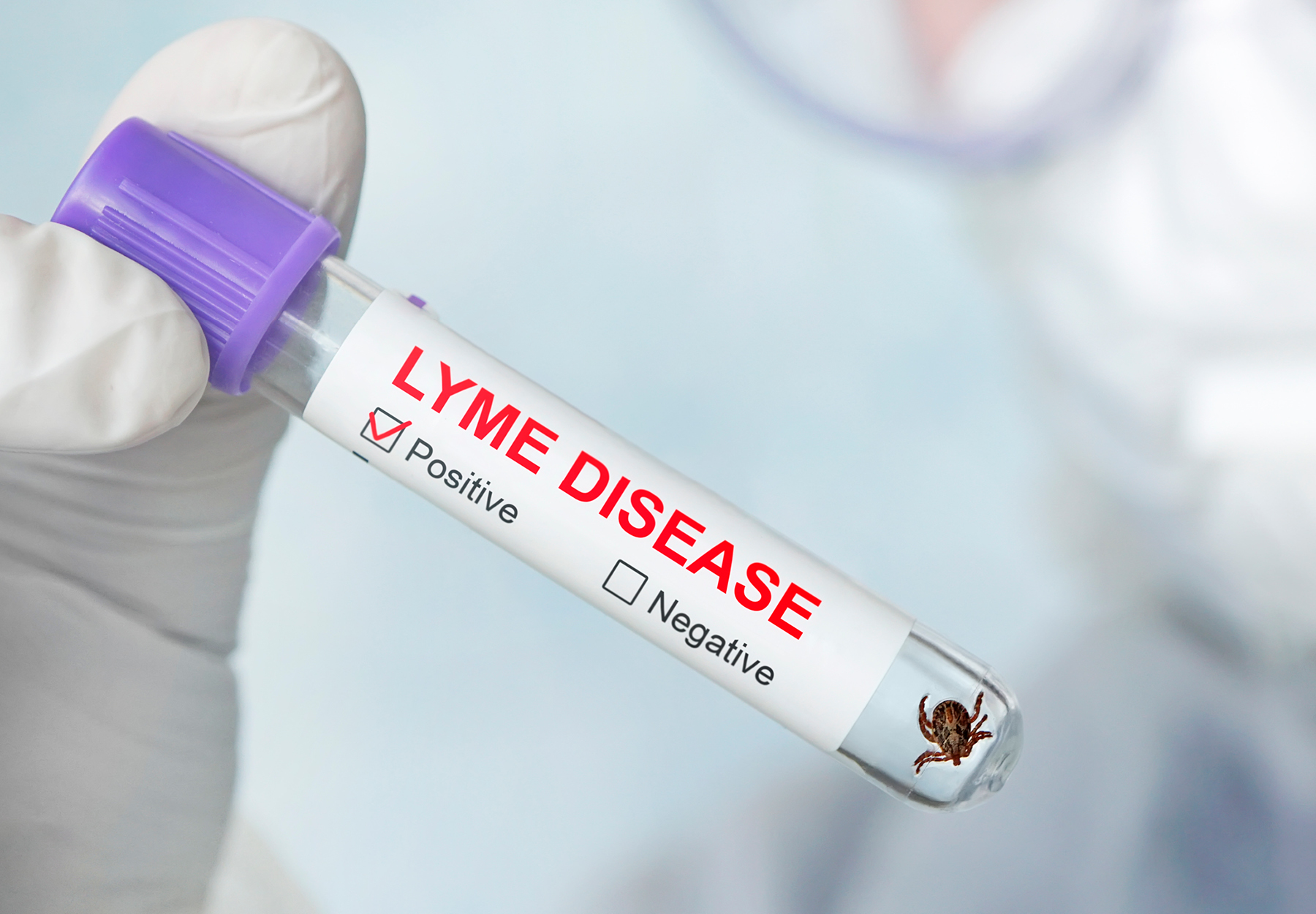Recent Discovery Could Lead to a Better Lyme Disease Test
Researchers have identified 35 genes found in high expression in people with long-term Lyme disease, which could lead to earlier detection.

Laboratory tests capable of reliably detecting tickborne diseases are few and far between. But that may soon change now that researchers have identified 35 genes found in high expression in people with long-term Lyme disease. The discovery made by a research team from the Icahn School of Medicine at Mount Sinai in New York may pave the way for earlier detection of what has been a notoriously difficult disease to diagnose and treat.
The Diagnostic Challenge
Lyme disease is caused by bacterial parasites called Borrelia burgdorferi spirochetes that are transmitted to humans by ticks. The US Centers for Disease Control and Prevention (CDC) receives approximately 30,000 reports of new cases each year, but because the disease is so often undiagnosed and/or unreported, the real number of US cases is estimated to be somewhere around 476,000 per year.1
Lyme disease infection may affect many organ systems. While most patients who suffer Lyme disease make a full recovery, especially when treated with antimicrobial drugs, 10 to 20 percent of cases lead to debilitating long-term complications, including mental impairment, fatigue, arthritis, and, in the worst cases, attacks on brain and heart tissue.2
The problem is that current diagnostics, mainly serologic assays detecting antigens that the body creates to fight the disease, are not effective at detecting Lyme disease early when it is most treatable. Part of the reason for that is the body may not produce antigens for weeks after an infection occurs. Even when a patient does test positive, it is often difficult to determine whether the result is due to chronic and persisting or past infection.
The New Lyme Disease Biomarkers
The discovery of new biomarkers for Lyme disease, which is reported in a study published in Cell Reports Medicine on November 15, 2022, could turn out to be a breakthrough in both diagnosis and treatment. The study builds on previous research finding strong differential gene expression (DGE) signatures in the peripheral blood mononuclear cells (PBMCs) of individuals who have acute Lyme disease. The hallmark of these signatures was the expression of numerous immune-related genes. The gene expression could also be detected for up to one year post-infection after treatment with antibiotics.3
Could there be gene expressions associated with a specific immune response to Lyme disease that can be detected by blood testing, the researchers wondered aloud. To test the hypothesis, they sequenced the RNA of 152 patients with post-treatment Lyme disease to measure their immune response. They also analyzed RNA sequencing data from 72 patients with acute Lyme disease, i.e., earlier symptoms, such as a rash or paralysis of the face, and a control sample of 44 uninfected persons. They observed differences in gene expression between those with acute and chronic Lyme disease and those without infection, finding that most post-treatment patients had a distinctive inflammatory signature as compared to the control group.
By comparing the gene expression of those with Lyme disease to those exhibited by patients with other infectious diseases, the researchers identified a subset of highly expressed genes for this inflammatory signature associated with Lyme disease.
For the finishing touches, the team applied machine learning to further narrow the group of genes to map out a messenger RNA (mRNA) biomarker set capable of distinguishing patients with acute or post-treatment Lyme disease from healthy patients.
Implications and Potential Impact
A gene panel measuring the expression of the genes the investigators identified could be the basis for a test to diagnose Lyme disease. Not surprisingly, the researchers say they plan to use the 35 biomarkers distinguishing people with Lyme disease from those without Lyme to develop such a genetic test.
“We should not underestimate the value of using omics technologies, including transcriptomics, to measure RNA levels to detect the presence of many complex diseases, like Lyme disease,” noted study senior author Avi Ma’ayan, PhD, professor of pharmacological sciences and director of the Mount Sinai Center for Bioinformatics, in a press release. “A diagnostic for Lyme disease may not be a panacea but could represent meaningful progress toward a more reliable diagnosis and, as a result, potentially better management of this disease.”4
It has been a fruitful year for Lyme disease diagnostics. In March, The Journal of Clinical Investigation published a new study from researchers at the Tufts University School of Medicine suggesting that a test detecting antibodies produced in response to phospholipids, or fats that the Borrelia burgdorferi bacteria take from their host surroundings, could be the basis for early Lyme disease diagnosis.
In July, scientists at the Johns Hopkins University School of Medicine and University of California, San Francisco, published a paper in Communications Medicine announcing that they have developed a panel of 31 mRNA-based biomarkers allowing them to accurately identify Lyme disease in 95.2 percent of patients.5
References:
- https://www.cdc.gov/lyme/datasurveillance/index.html
- https://now.tufts.edu/2022/03/15/potential-new-test-diagnosing-lyme-disease
- https://www.cell.com/cell-reports-medicine/fulltext/S2666-3791(22)00375-5?_returnURL=https%3A%2F%2Flinkinghub.elsevier.com%2Fretrieve%2Fpii%2FS2666379122003755%3Fshowall%3Dtrue
- https://www.mountsinai.org/about/newsroom/2022/genes-to-potentially-diagnose-long-term-lyme-disease-identified
- https://www.nature.com/articles/s43856-022-00127-2
Subscribe to Clinical Diagnostics Insider to view
Start a Free Trial for immediate access to this article